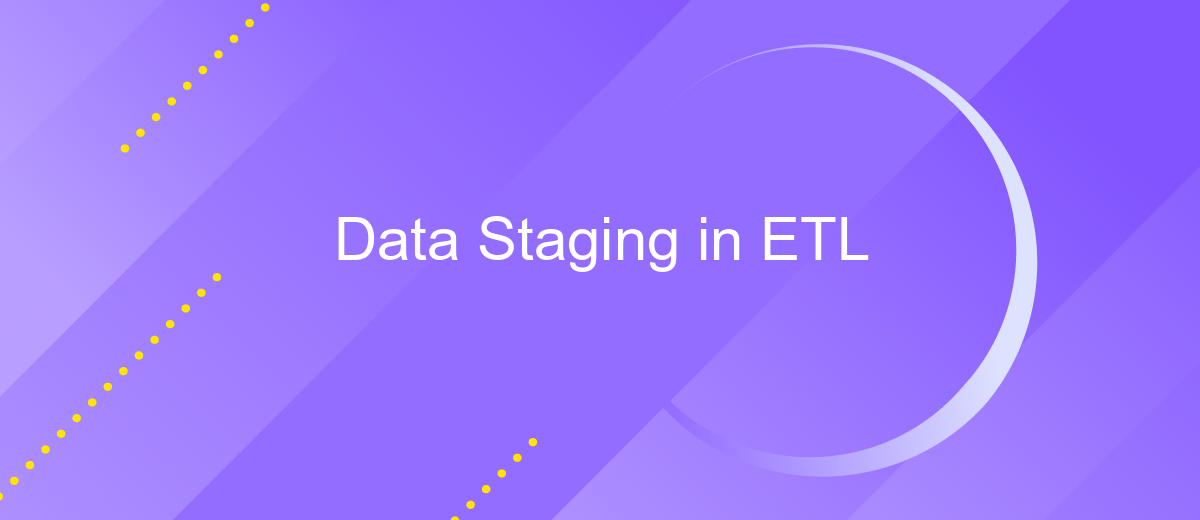Data Staging in ETL
Data staging is a critical phase in the ETL (Extract, Transform, Load) process, serving as an intermediary storage area where raw data is temporarily held and prepared for further processing. This stage ensures that data is efficiently transformed and cleansed before it is loaded into the target system, enhancing data quality and streamlining the overall ETL workflow.
Introduction
Data staging is a critical phase in the ETL (Extract, Transform, Load) process, where raw data is collected, cleaned, and prepared for further processing. This intermediary step ensures that the data is in the right format and quality before it moves into the data warehouse or analytical tools. Without proper data staging, the ETL process can become inefficient and error-prone, leading to inaccurate insights and poor decision-making.
- Data extraction: Gathering data from various sources.
- Data transformation: Cleaning and converting data into a usable format.
- Data loading: Moving the transformed data into the target system.
Effective data staging can significantly improve the performance and reliability of the ETL process. Tools like ApiX-Drive can automate and streamline data integration, making it easier to manage and process large volumes of data. By leveraging such services, organizations can ensure that their data staging is both efficient and scalable, ultimately leading to more accurate and actionable business insights.
Understanding Data Staging

Data staging is a crucial step in the ETL (Extract, Transform, Load) process, serving as an intermediate storage area where data is temporarily held and processed before being moved to the final destination. This stage allows for the cleansing, transformation, and enrichment of data, ensuring that it is in the optimal format for analysis and reporting. By staging data, businesses can handle large volumes of information more efficiently, reducing the risk of errors and ensuring data integrity.
One of the key benefits of data staging is the ability to integrate data from multiple sources seamlessly. Tools like ApiX-Drive facilitate this integration by providing a platform for connecting various data sources and automating the data transfer process. This not only saves time but also minimizes the complexity involved in manual data handling. With ApiX-Drive, organizations can streamline their ETL workflows, ensuring that data is accurately and consistently prepared for downstream analytics and business intelligence applications.
Benefits of Data Staging

Data staging plays a crucial role in the ETL (Extract, Transform, Load) process by acting as an intermediary storage area where data is cleaned, transformed, and prepared for further processing. This intermediate step ensures that the data is accurate, consistent, and ready for analysis, thereby enhancing the overall efficiency of data workflows.
- Improved Data Quality: Staging allows for thorough data cleansing and validation, ensuring that only high-quality data is loaded into the target system.
- Enhanced Performance: By staging data, the ETL process can handle large volumes of data more efficiently, reducing the load on the target system and improving performance.
- Simplified Troubleshooting: Staging provides a snapshot of the data at various stages, making it easier to identify and resolve issues during the ETL process.
- Data Integration: Tools like ApiX-Drive facilitate seamless integration between various data sources and the staging area, streamlining the data flow and ensuring consistency.
Incorporating a data staging area in the ETL process not only optimizes data handling but also ensures that businesses can rely on accurate and timely information for decision-making. By leveraging services like ApiX-Drive, organizations can further enhance their data integration capabilities, making the entire ETL workflow more robust and efficient.
Implementation of Data Staging

Implementing data staging in ETL processes involves creating an intermediate storage area where data is cleansed, transformed, and prepared for further use. This stage ensures that raw data from various sources is processed and standardized before being loaded into the target system. It helps in improving data quality, consistency, and integration efficiency.
To set up a data staging area, you need to design a robust architecture that can handle data from multiple sources. This includes defining the storage format, setting up data pipelines, and scheduling regular data loads. Tools like ApiX-Drive can facilitate the integration of different data sources, automating the extraction and loading processes.
- Define data storage format (e.g., CSV, Parquet)
- Set up data pipelines for extraction and transformation
- Schedule regular data loads and updates
- Utilize integration tools like ApiX-Drive for automation
Once the data staging area is established, it acts as a buffer zone, allowing data analysts and engineers to perform necessary transformations without impacting the source systems. This step is crucial for ensuring that the data entering the target system is accurate, consistent, and ready for analysis.


Best Practices for Data Staging
Effective data staging is crucial for a seamless ETL process. One of the best practices is to ensure data quality at the staging level. This involves implementing validation checks to filter out incomplete or incorrect data before it moves further in the ETL pipeline. Utilizing tools like ApiX-Drive can help automate this validation process, ensuring that only clean, usable data is staged for transformation and loading. Additionally, maintaining a clear schema for your staging area can simplify data management and improve overall efficiency.
Another important practice is to optimize storage and processing performance. This can be achieved by partitioning large datasets and indexing frequently queried fields. Regularly monitoring and adjusting resource allocation based on workload can also enhance performance. Furthermore, implementing robust security measures, such as encryption and access controls, is essential to protect sensitive data at the staging level. By following these best practices, organizations can ensure a more reliable and efficient ETL process, leading to better data insights and decision-making.
FAQ
What is data staging in ETL?
Why is data staging important in the ETL process?
What are the common components of a data staging area?
How can automation improve the data staging process?
What challenges can arise in the data staging process?
Strive to take your business to the next level, achieve your goals faster and more efficiently? Apix-Drive is your reliable assistant for these tasks. An online service and application connector will help you automate key business processes and get rid of the routine. You and your employees will free up time for important core tasks. Try Apix-Drive features for free to see the effectiveness of the online connector for yourself.

